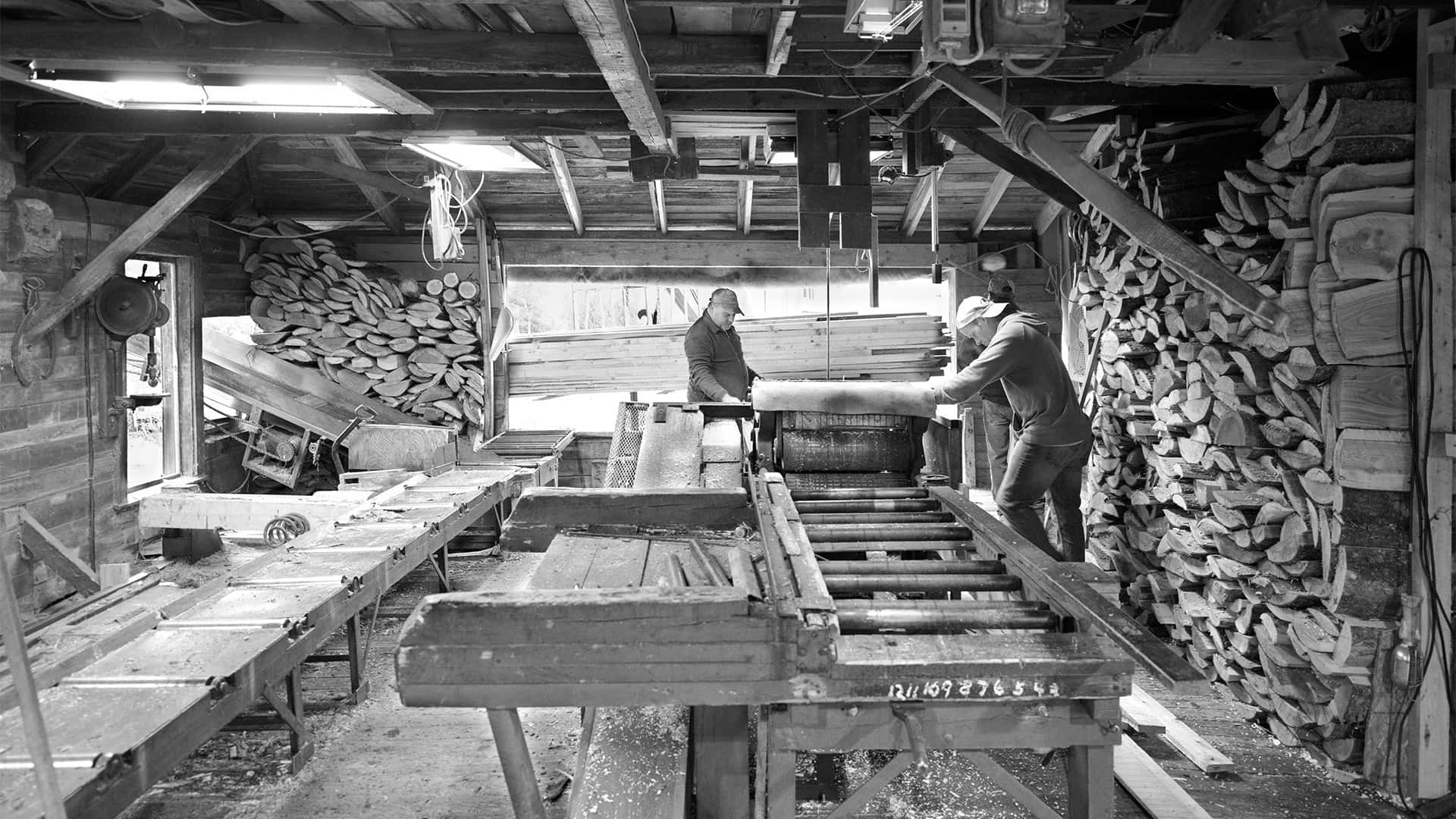
The University of Maine at Fort Kent Blake Library Gallery will host an exhibition titled “The Mills of the Valley, 1785-2023: A Graphic Essay” by Al Craft. The exhibition will be on display from August 28th through September 28th on the University campus. The event is free and open to the public.
The exhibit explores ways geography affected – and was affected by – the nearly 350 saw and grist mills that historically operated in the Upper Saint John River Valley.
During and after a 2021 visit, three things triggered Al’s interest in the project: an act of kindness, something someone said, and something someone wrote. Daniel Tardif, owner-operator of Tardif Saw Mill in Fort Kent, kindly allowed Al to take photos of his mill in operation. An amateur digital photographer, Al jumped at the chance. Monica Tardif, Dan’s wife, was Al’s mill whisperer. She mentioned to him her impression that many young people in the community seem unaware of how mills feature in the community’s history, economic evolution, and cultural identity.
While Al wondered if there might be a way to use his photos to help spread the word, he had the good fortune to come across Joseph Theriault’s 2022 two-volume ground-breaking study, Moulins du Madawaska. “The importance of Mr. Theriault’s work cannot be overstated,” says Al, who trusted in it as a solid foundation upon which to build his project viewed through a geographer’s lens.
Al interviewed numerous farmers, woodsmen, businessmen, civic leaders, academicians, and millers of grain and wood in The Valley and beyond. He undertook seemingly unending cyber searches of libraries, repositories, and archives from London to Quebec, Fort Kent to Washington, D.C., and many more in between. He consulted hundreds of books, journal articles, and academic studies, as well as an equal or greater number of maps, paintings, tables, charts, and photos, some of which he has included in the installation.
The exhibit also covers American Indian use of Aroostook’s natural landscape; the Acadian, French Canadian, and Anglo arrivals and their respective use of mills; and how major historical inflection points – for example, the Webster-Ashburton Treaty, the days when lumber held powerful sway, the railroads’ fitful arrival, and region’s economic center of gravity shift from lumber to potatoes – affected Valley millers and mills.
Al leaned heavily on Sofia Birden, director of Library Services at the Blake Library, for expert research guidance and academic mentoring from Dr. Patrick Lacroix, director of the Acadian Archives. Judging that an intimate bridge to the community’s values and culture would leaven the project, he also reached out to Annette Grant and Don Raymond, life-long area residents, who helped steer and shape the project along the way as community advisors.
Of the 350 or so mills that operated in The Valley during the period of study, fewer than five remain open. Among those few, the longest continuously running mill in The Valley’s history remains open in Fort Kent: blades still whir at Tardif Saw Mill, a small but mighty family-owned heritage enterprise, now more than 100 years old. It serves not just as a mill but also contributes to community cohesion and the area’s unending attachment to its natural endowment.
Al believes that cohesion – a difficult-to-define but altogether precious quality – distinguishes The Valley from so many other localities he has come to know across the country. If Monica Tardif was right, Al thinks that the project will have succeeded even if just one young person sees it and comes away from it with a newly kindled sense of awe, knowing more about the centrality of mills in The Valley’s geography, history, economy, and culture.
A UMFK 1980 alumnus, Al resides in Raleigh, North Carolina. After leaving Fort Kent, he earned a master’s degree in geography at the University of Georgia. He retired from federal service more than a decade ago, however, and since then, he has returned to Fort Kent each fall.
The exhibit can be viewed during regular library hours. For more information, contact gallery curator Sofia Birden at (207) 834-7527.
